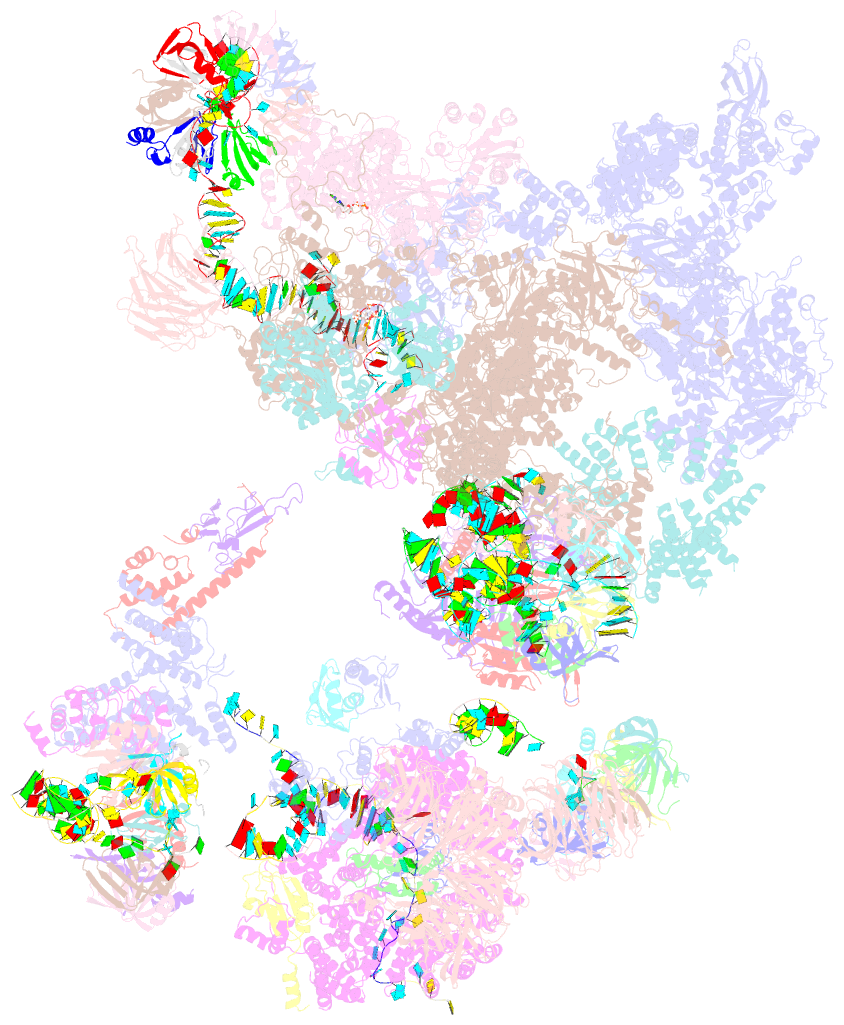Summary information and primary citation
- PDB-id
- 6ah0; SNAP-derived features in text and JSON formats;
DNAproDB
- Class
- splicing
- Method
- cryo-EM (5.7 Å)
- Summary
- The cryo-EM structure of the precusor of human pre-catalytic spliceosome (pre-b complex)
- Reference
- Zhan X, Yan C, Zhang X, Lei J, Shi Y (2018): "Structures of the human pre-catalytic spliceosome and its precursor spliceosome." Cell Res., 28, 1129-1140. doi: 10.1038/s41422-018-0094-7.
- Abstract
- The pre-catalytic spliceosome (B complex) is preceded by its precursor spliceosome (pre-B complex) and followed by the activated spliceosome (Bact complex). The pre-B-to-B and B-to-Bact transitions are driven by the ATPase/helicases Prp28 and Brr2, respectively. In this study, we report the cryo-electron microscopy structures of the human pre-B complex and the human B complex at an average resolution of 5.7 and 3.8 Å, respectively. In the pre-B complex, U1 and U2 small nuclear ribonucleoproteins (snRNPs) associate with two edges of the tetrahedron-shaped U4/U6.U5 tri-snRNP. The pre-mRNA is yet to be recognized by U5 or U6 small nuclear RNA (snRNA), and loop I of U5 snRNA remains unengaged. In the B complex, U1 snRNP and Prp28 are dissociated, the 5'-exon is anchored to loop I of U5 snRNA, and the 5'-splice site is recognized by U6 snRNA through duplex formation. In sharp contrast to S. cerevisiae, most components of U2 snRNP and tri-snRNP, exemplified by Brr2, undergo pronounced rearrangements in the human pre-B-to-B transition. Structural analysis reveals mechanistic insights into the assembly and activation of the human spliceosome.





